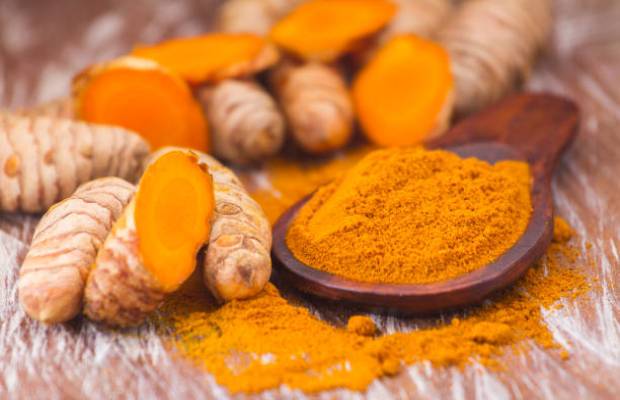Skin Benefits Of Turmeric & How To Use It

Originally from India and other parts of South Asia, turmeric, sometimes known as curcumin, is a widely used spice. It comes from the roots of the Curcuma longa plant, a kind of ginger plant. For millennia, Ayurvedic and traditional Chinese medicine have employed turmeric. Indian food also frequently uses it. Turmeric is well-known for its earthy, bitter flavor and vivid yellow color. Turmeric offers numerous possible health advantages in addition to its culinary usage.
An anti-inflammatory and antioxidant substance found in turmeric is called curcumin. Curcumin may be helpful in treating diseases like cancer and cardiovascular disease because it has been demonstrated to prevent the growth of new blood vessels. Curcumin may also assist in lowering cholesterol, preventing blood clots, and lowering the risk of dementia. It might also have anti-anxiety and antidepressant properties.
When taken in moderation, most people can safely use turmeric. Before taking turmeric pills, it's crucial to see your doctor as it may interfere with some drugs. When ingesting turmeric, people with specific medical disorders, such as gallbladder disease, should exercise caution.
Although it can also be found as a supplement, powdered powder is the most popular form of turmeric consumption. Although there are many recommendations for daily dosage, most research have employed 500–2,000 mg of turmeric. Make careful to select a turmeric supplement that is standardized to have a specific amount of curcumin if you're taking one. It's crucial to select a supplement whose efficacy and purity have been independently verified. Black pepper extract, which boosts curcumin absorption, may also be included in turmeric pills. Turmeric can also be consumed or used in cooking to enhance your nutrition.
Turmeric has long been valued for its exceptional benefits to skin health, even outside of its culinary uses. This golden spice is a priceless addition to any skincare regimen thanks to its many beneficial qualities.
Skin Benefits of Turmeric
1. Anti-Inflammatory Characteristics
READ ALSO » 10 Health Benefits Of Turmeric You Must Know
The most remarkable quality of turmeric is how strong an anti-inflammatory it is. Psoriasis, eczema, and acne are just a few of the skin disorders that are significantly exacerbated by inflammation. The anti-inflammatory qualities of turmeric can lessen redness and swelling in irritated skin by calming and soothing it.
2. Powerhouse of Antioxidants
Antioxidants, such as those found in turmeric, protect the body from the harm that free radicals—a byproduct of pollution and UV radiation—cause. Free radical damage causes wrinkles, fine lines, and a lack of suppleness in the skin, hastening the aging process. Because of its antioxidants, turmeric helps prevent premature aging of the skin by scavenging these dangerous free radicals.
3. Antiseptic and Microbiological Properties
Turmeric has antibacterial and antiseptic qualities that can help against microorganisms that cause acne. Turmeric can aid in clearing up acne and promoting clearer skin by decreasing bacterial development.
4. Properties of Wound Healing
Turmeric has the ability to heal wounds because of its antioxidant and anti-inflammatory qualities. It aids in promoting collagen synthesis, which is essential for skin regeneration and healing. Additionally, turmeric helps increase blood flow to the injured area, supplying vital nutrients.
5. Equilibrates Skin Tone and Enhances Complexion
Due to its capacity to prevent the synthesis of melanin, turmeric can help lessen dark spots and hyperpigmentation, giving the skin a more luminous and even tone. Moreover, it naturally brightens the skin, giving it a radiant appearance.
6. Postponements Aging Signs
Turmeric's anti-inflammatory and antioxidant qualities combine to prevent aging symptoms. Turmeric helps preserve skin suppleness and prevents the creation of fine lines and wrinkles by shielding the skin from free radical damage and lowering irritation.
How to Use Turmeric for Skin
Several methods exist for incorporating turmeric into your skincare regimen:
1. Use of Topics
READ ALSO » Top 10 Health Benefits Benefits Of Chia Seed
Turmeric pastes, lotions, and masks can be administered topically. Turmeric powder can be used with aloe vera gel, yogurt, or honey to make a mask. After leaving the mask on for 15 to 20 minutes on clean face, carefully rinse.
2. Consumption of Food
Add turmeric to smoothies, soups, and curries to get it into your diet. Turmeric can continue to improve skin health when consumed on a regular basis.
3. Supplements with Turmeric
Supplements containing turmeric can also be found in powder or capsule form. Although further studies are need to determine the efficacy of turmeric supplements for skin health, some have shown promise in lowering acne and enhancing the general texture of the skin.
Precaution
When applying turmeric topically, it's best to wear gloves because it might temporarily discolor skin. In order to be sure there won't be an allergic reaction, it's also a good idea to perform a patch test on a tiny section of skin before taking turmeric.
With so many skin-beneficial qualities, turmeric is a great complement to any skincare routine. Numerous skin issues, such as acne, eczema, psoriasis, and premature aging, can be helped by its anti-inflammatory, antioxidant, and antibacterial qualities. Turmeric is a safe, all-natural method of supporting healthy, glowing skin, whether it is applied topically, eaten as part of a diet, or taken as a supplement.
